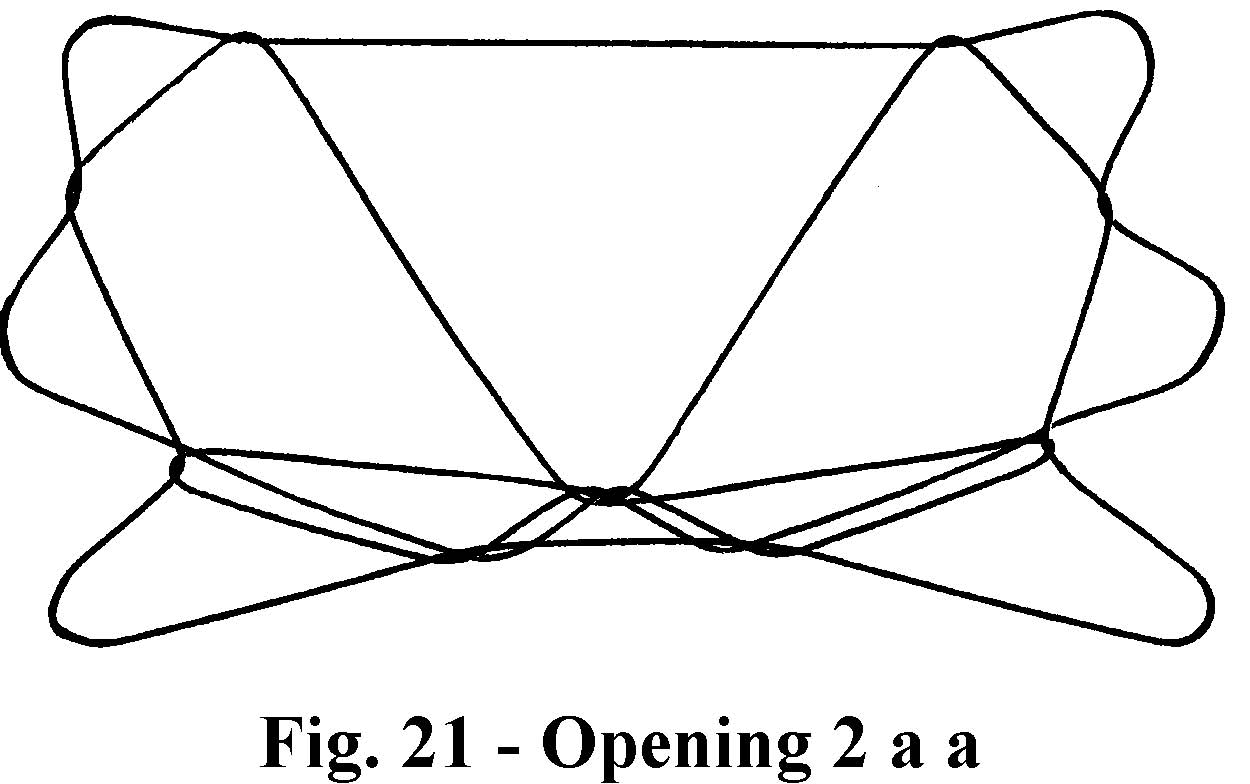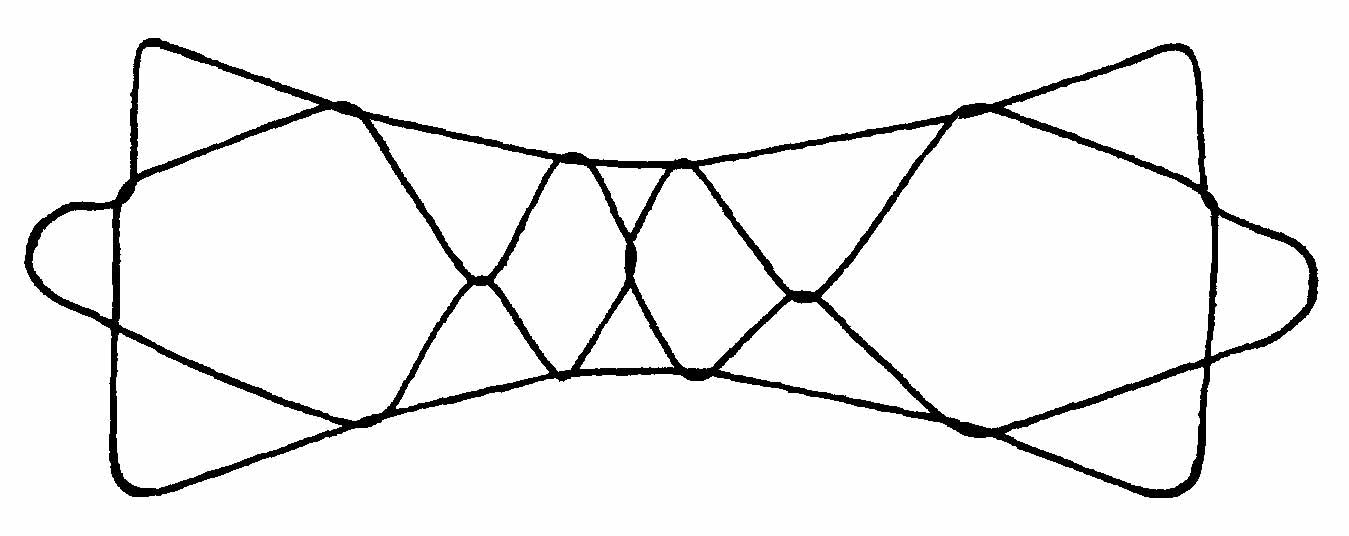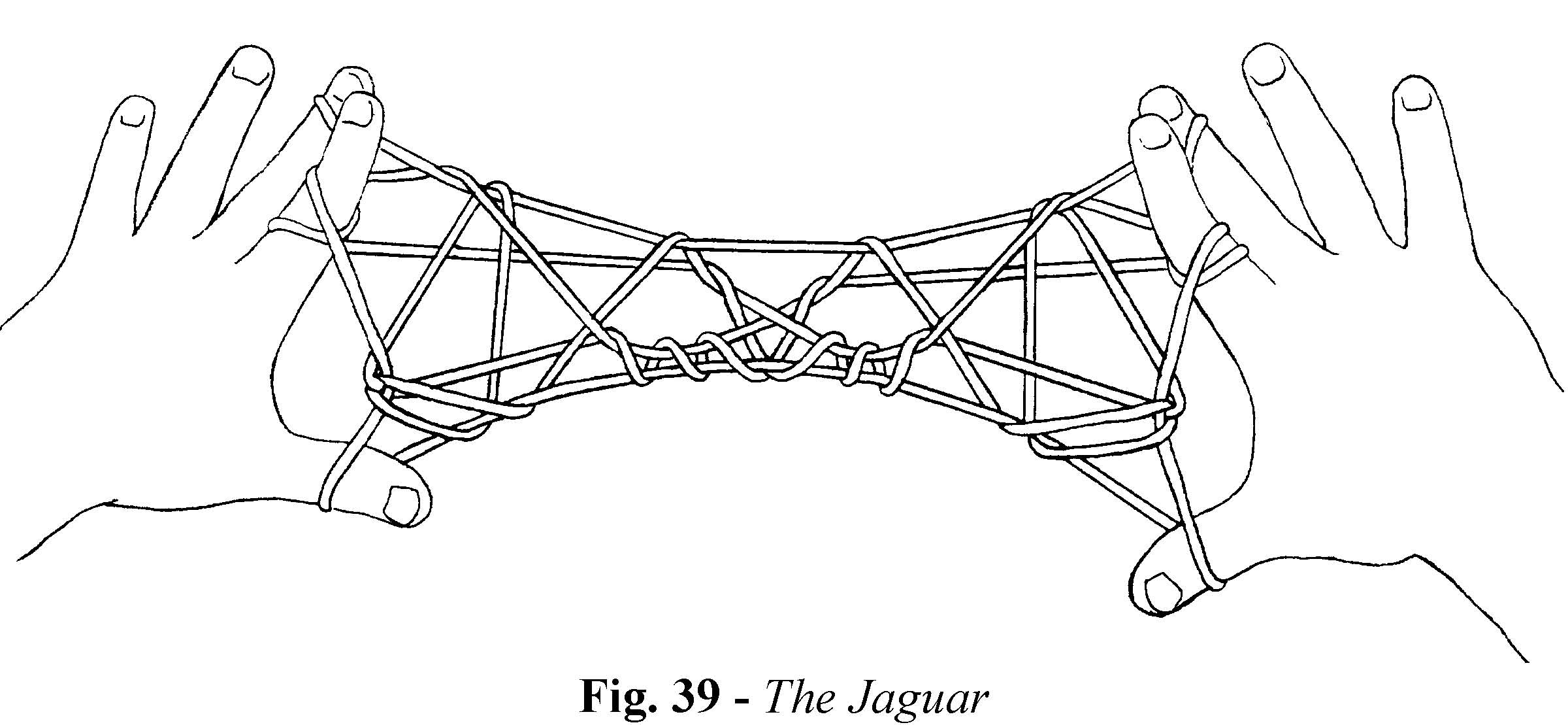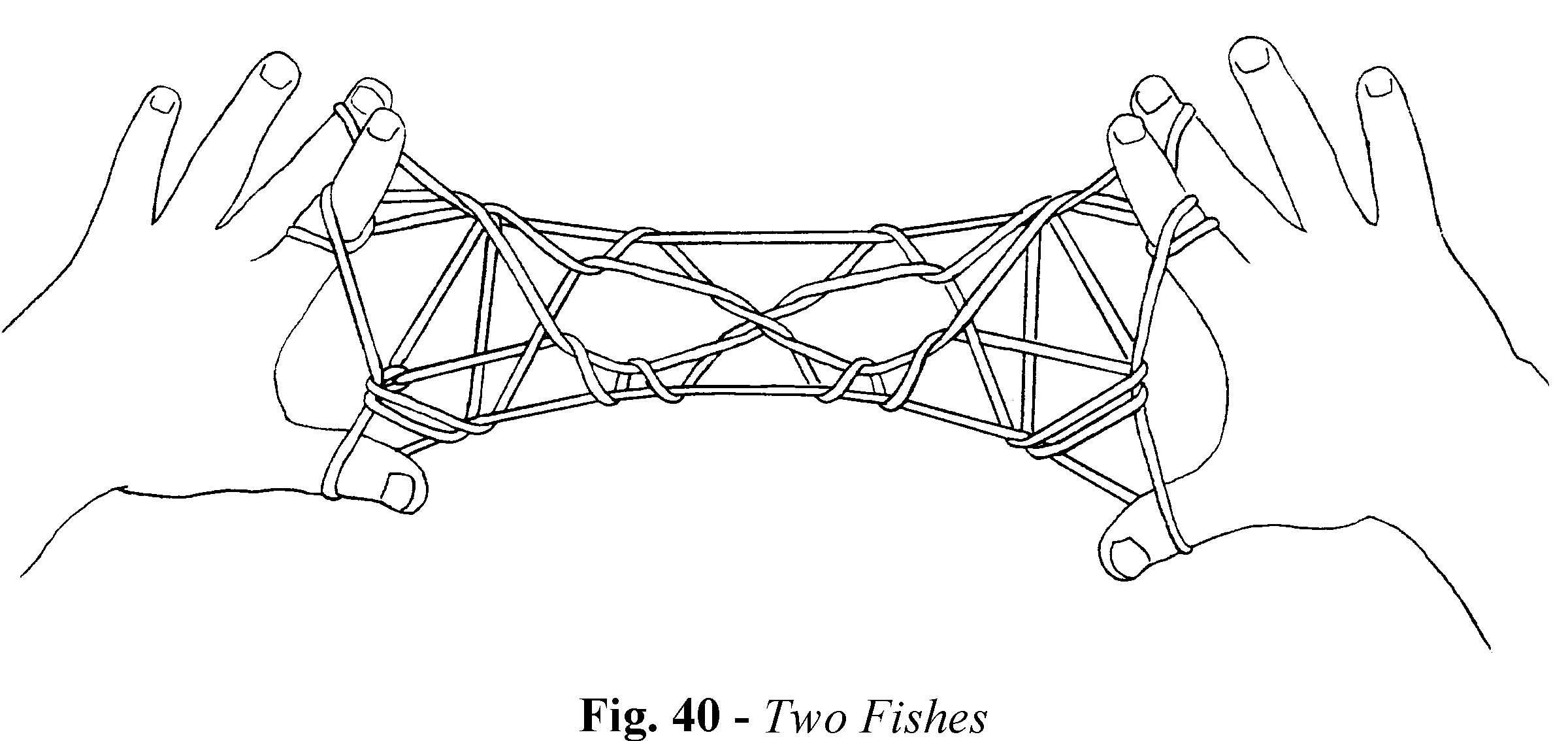rearranging the loom strings
Suppose for the moment you have the Ten Men loom on your hands and are ready to begin weaving. Perhaps you forget to reach for the near little finger string and instead pick up the lower near index string. This is like applying an a weave to the lower index loops rather than the little finger loops. If you then finish this “weave” and reset the loom (i.e., pick up the upper near index string, navaho the thumb loops, release the upper index loop and transfer the thumb loop to the index), you have something that resembles the original Ten Men loom. But if you inspect it carefully, you will note that the string crossings are different. What i think about this maneuver is that you have now formed a completely different loom by applying the logic of an a weave to the lower index loops. If we rename the original Ten Men loom (opening 1), then the new loom described above is appropriately named opening 2.
If you now form the figure opening 2 a a (fig. 21), you should see that it differs from Ten Men (opening 1 a a) because of the altered loom. As a matter of fact, you will find that opening 2 is “degenerate” in that the figures formed with it tend to collapse onto the bottom frame string and are not pulled up onto the top frame string to form a web. This is where the Universe weaves prove useful — they help lift the pattern up onto the top frame line. Two of my finest creations (Jaguar and Five-Pointed Star) appeared while attempting to “repair” an opening 2 figure using Universe weaves.
As mentioned above, opening 2 is basically an a weave applied to the lower index loops rather than the little finger loops. Using the same logic, one can devise additional new looms by applying b, c, a’, b’ or c’ type weaves to the lower index loops of the original Ten Men loom, thus arriving at the following list:
opening 1 Original ten men loom.
opening 2 Thumbs pick up lower near index string; finish weave and reset loom (essentially a lower index loop a weave).
opening 3 Thumbs go under lower near index string and pick up lower far index string (essentially a lower index loop b weave).
an extended discussion of the first three logic systems
opening 4 Thumbs go over lower near index string and pick up lower far index string (essentially a lower index loop c weave).
opening 5 Same as opening 2 but downflip the lower near index string (essentially a lower index loop a’ weave).
opening 6 Same as opening 3 but downflip the lower far index string (essentially a lower index loop b’ weave).
opening 7 Same as opening 4 but downflip the lower far index string (essentially a lower index loop c’ weave).
In openings 2-7, you will need to finish the weave (pick up upper near index string, navaho thumbs) and reset the loom (release upper index loops, transfer thumb loops to indices) to generate the new loom.
Additional altered looms, listed below, can be created by rotating one or both of the index loops, or by threading various loops up or down through other loops:
opening 8 Rotate both index loops a full turn toward you (store the upper loop on your middle finger while rotating the lower loop).
opening 9 Rotate both index loops a full turn away from you (store the upper loop on your middle finger while rotating the lower loop).
opening 10 Rotate the upper index loop a full turn toward you.
opening 11 Rotate the upper index loop a full turn away from you.
opening 12 Rotate the lower index loop a full turn toward you.
opening 13 Rotate the lower index loop a full turn toward you.
opening 14 Pass little finger loop down through lower index loop and reset it on the little finger.
opening 15 Pass little finger loop up through lower index loop and reset it on the little finger.
opening 16 Pass thumb up through both index loops, transfer upper index loop to thumb, return through lower index loop, bring thumb toward you, then transfer the loop back to the top of the index (this gives the same result as opening 2).
opening 17 Pass thumb up through both index loops, transfer upper index loop to thumb, return through lower index loop, pass thumb away from you, then transfer the loop back to the top of the index.
opening 18 Do opening 16 followed by opening 17.
opening 19 Do opening 17 followed by opening 16.
an extended discussion of the first logic systems
One can also create new designs by weaving only the lower index loop strings (i.e., by omitting the normal a-e’ weaving of the little finger loop strings) or by mixing lower index weaves with little finger weaves. For example, the following two-weave sequence, which uses only lower index loop (b weave on the lower index loop only, weave, reset loom, b weave on the lower index loop only, extend) gives a pleasing pattern with interlocking diamonds. Indeed, the distinction between what constitutes an alternative loom and what constitutes an alternative weave begins to blur as you continue to experiment within the Ten Men system.
b weave on the lower index loop only, weave, reset loom,
b weave on the lower index loop only, extend
opening 2: a, a, a, Va, extend
extended discussion of making the jaguar
opening 2: a, a, Va, extend
extended discussion of making the figure two fish
things to consider
you may have your own ideas about how to alter the loom to form new logic systems. you should try new things for yourself, but i caution you to make sure you take notes as you do so you will be able to recapture any new figure you find. with all these complexities it is easy to forget an essential detail and not be able to re-make a fantastic figure you discover for yourself.
and there are other ways i have imagined making new logic systems. check out the page “more logic systems.”




